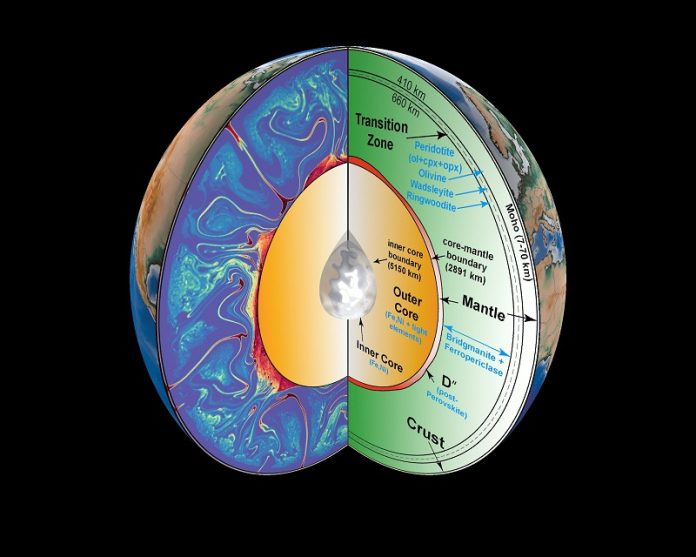
For decades, scientists have been puzzled by strange seismic signals called PKP precursors, which are waves that reach the Earth’s surface ahead of the main seismic waves traveling through the planet’s core.
These signals have long been a mystery, but new research led by geophysicists from the University of Utah is starting to unravel the enigma.
PKP precursors are believed to come from deep regions below North America and the western Pacific.
The researchers think these signals might be connected to “ultra-low velocity zones” (ULVZs), which are thin layers in the Earth’s mantle where seismic waves slow down dramatically.
The study, published in AGU Advances, suggests that these ULVZs might play a role in the formation of large volcanic hotspots, like those found at Yellowstone, the Hawaiian Islands, and Iceland.
“These are some of the most extreme features discovered on the planet. We legitimately do not know what they are,” said Michael Thorne, the study’s lead author and associate professor of geology and geophysics at the University of Utah.
Thorne and his team discovered that these ULVZs often gather beneath hotspot volcanoes, leading them to believe that these zones might be the root of the mantle plumes that create these large, persistent volcanoes.
Thorne’s team used advanced seismic techniques to study data from 58 earthquakes that occurred near New Guinea and were recorded in North America.
By developing a new method to model seismic waveforms, they were able to trace the source of the PKP precursors to specific locations along the boundary between the Earth’s liquid outer core and the mantle, known as the core-mantle boundary, located 2,900 kilometers below the surface.
The findings suggest that PKP precursors are likely scattered by ULVZs at this core-mantle boundary.
Thorne suspects that these ultra-low velocity zones form where subducted tectonic plates—pieces of the Earth’s crust that have sunk into the mantle—hit the core-mantle boundary in oceanic regions.
These layers, though only 20 to 40 kilometers thick, seem to spread across the core-mantle boundary, especially beneath North America.
“What we’ve now found is that these ultra-low velocity zones do not just exist beneath the hotspots. They’re spread out all across the core-mantle boundary beneath North America,” Thorne explained.
He believes that the ULVZs are being actively generated by melted oceanic crust, which then moves across the Earth’s interior and accumulates beneath hotspots or Large Low Velocity Provinces, vast regions under the Pacific and Africa.
While this research offers new insights, the full consequences of these findings remain unclear, and further studies will be needed to understand how these deep-Earth processes impact our planet’s surface.



